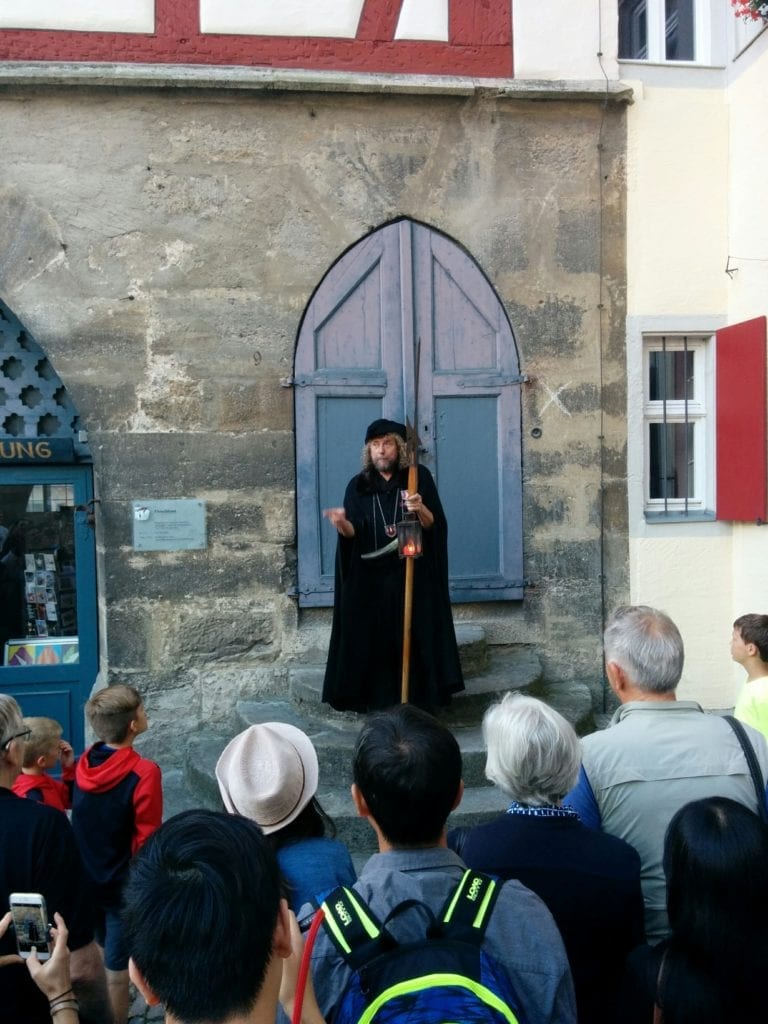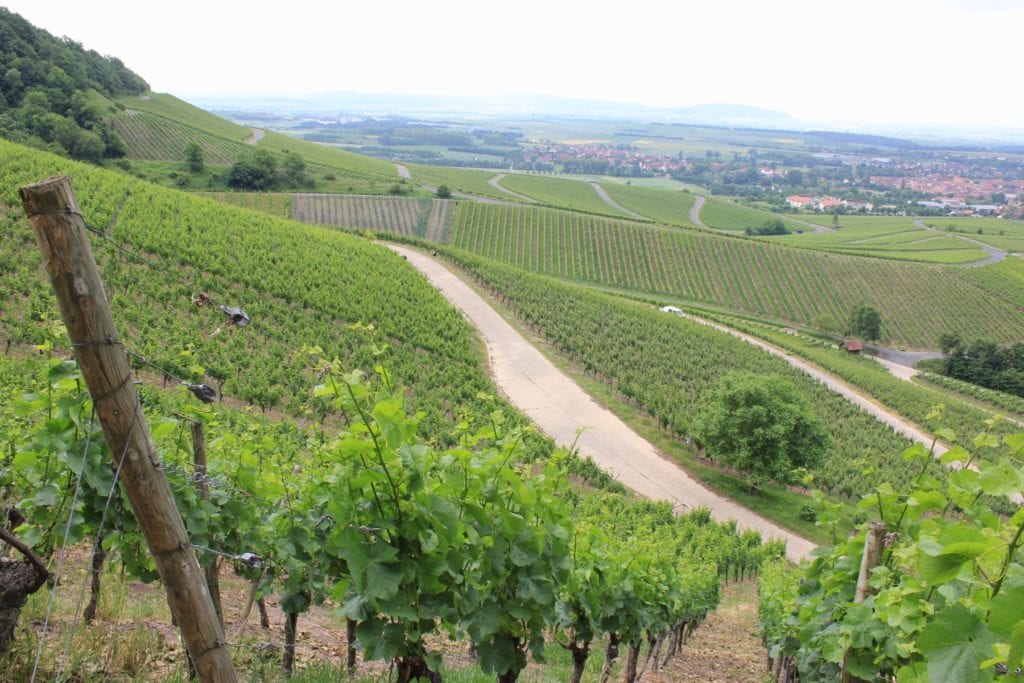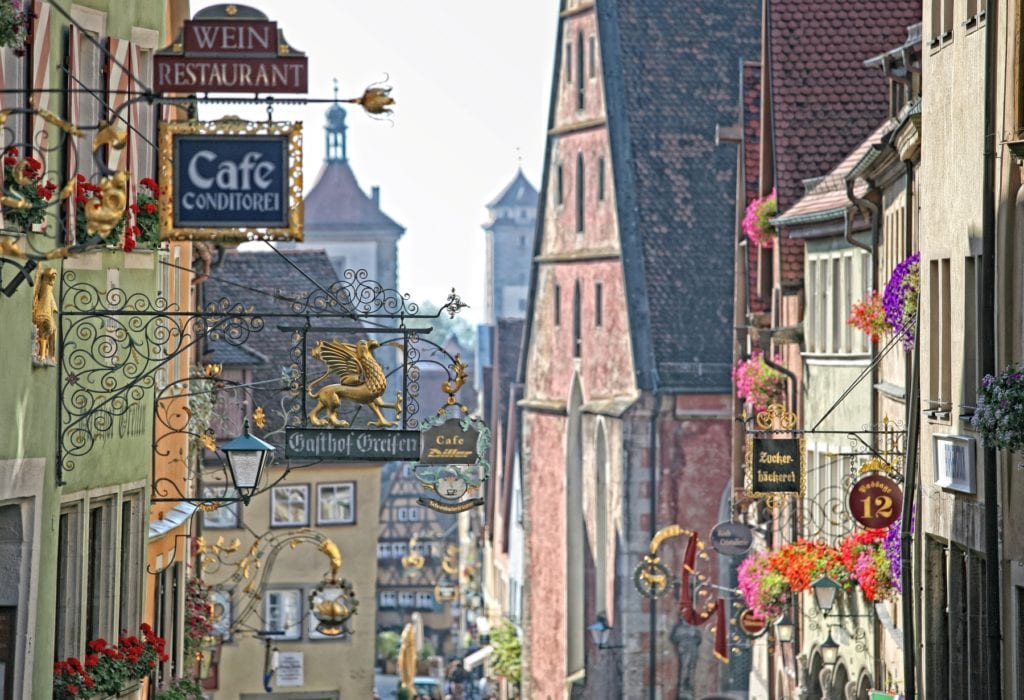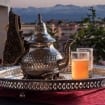
“I really don’t know why the Germans go to Spain or Italy if they have this on their doorstep”, my husband mused. We were standing on the Old Main Bridge in Würzburg, with a glass of white wine in hand, just like the locals, and basked in temperatures of around 27 degrees on an early summer afternoon. In the distance, vineyards were sprawling up and down the hills, and we should be forgiven for thinking we were in more southern pastures.
After picking up our rental car at Frankfurt Airport, we had arrived just 90 minutes later in the northern gateway of Germany’s Romantic Road, the oldest and best known touring route. Created in 1950, when the country was desperate to rebuild a tourism industry in the post-war times, the route goes past lush meadows, mighty castles, wild rivers and medieval alleyways. The 460km long stretch takes from three to seven days to complete.

We began our journey with an overnighter in Würzburg, a bustling university city that was restored to its former glory after nearly 90% were destroyed in WWII. High on a hill sits the impressive Marienberg Fortress, while the Residence Palace, a UNESCO World Heritage Site, is one of Europe’s most renowned Baroque castles. Inside, we marvelled at Balthasar Neumann’s famous staircase and the ceiling fresco by Giovanni Battista Tiepolo. Spanning over an impressive 18 × 32 meters it is one of the largest ever painted.

It was a perfect summer evening for mingling outdoors with the locals on communal benches at the Bürgerspital Weinstuben. Over glasses of delicious local wine and traditional fare, new acquaintances are quickly found. Rotling wine, a local specialty, and something I had never tasted before, quickly emerges as my favourite. Looking like a very dark, nearly crimson rosé, it’s a wine which has been made by mixing red and white grapes.
Before setting off on our road trip, we detoured to the small town of Iphofen, with 24 wineries a hub of Franconian wine production, to meet Andy Weigand. Only in his late 20s, he belongs to a new generation of winemakers. “We’re questioning some of the old methods, trying to find a new, better way of winemaking,” he said while showing us around his vineyard. This includes hand harvesting, organic pest control, spontaneous fermentation and a focus on a few, but high-quality grapes. A strategy that seems to work with his Silvaner wines winning numerous accolades.

Our rental car effortlessly switched gears between open road and city driving as we followed the brown and white signs for Germany’s Romantic Road and travelled through traditional villages and small towns like Tauberbischofsheim and Lauda-Königshofen. The drive on the country roads and along the open fields with poppies, corn flowers, and wheat waving like an ocean in the wind, was exhilarating. The sun bathed the landscape in a kaleidoscope of green, blue and yellow, dotted with white houses, black barns, and orange roof tiles. Many villages proudly displayed their maypole, a tall wooden pole traditionally erected to celebrate the end of winter.

Our next stop was Rothenburg ob der Tauber, arguably Germany’s best-preserved medieval town. It may be small but its reputation is huge, especially in Japan and the US. Wandering past half-timbered houses, fountains, secluded squares and tucked-away corners of the old quarter, we couldn’t help but wonder if time stood still here. “Rothenburg is so well preserved because it simply ran out of money after the Thirty Year War and no new buildings like those in other towns were erected” explained the night watchman, Hans Georg Baumgartner, on his tour.

For dinner, we dropped in the Restaurant Hotel Schranne, a 17th-century building with a typical beer garden in the back. “We only have another few days of white asparagus season left,” hinted the owner, Markus Meinold. Lovingly called the ‘vegetable of kings,’ ‘edible ivory,’ or simply ‘white gold’, the whole country goes asparagus-crazy from mid-April to 24 June. Franconia is one of the main regions of white asparagus production and as promised, the slightly sweet tasting spargel with a spiced bratwurst and creamy sauce hollandaise is a delightful taste explosion.

Before our departure the following morning, we visited the Käthe Wohlfahrt Christmas Village, the largest, open all year round Christmas store in Europe for some festive off-season cheer.
We left Rothenburg via the Tauber River Valley and the Topplerschlösschen, a small castle resembling an oversized bird house, to travel the half an hour south to Dinkelsbühl. Despite being lesser known than its northern cousin, the town nevertheless charms with intact fortifications, the Gothic Minster of St. George and fewer visitors. We strolled between the proud pastel-hued patrician residences and enchanting semi-timbered houses, reminding of Dinkelsbühl’s status as a former Imperial Town. We could have stayed for hours, but Füssen, framed by snow-covered peaks and an idyllic lake district, at the southern end of the Romantic Road, beckoned.

Appearing through the mountaintops like a mirage, the grey granite Schloss Neuschwanstein is one of Germany’s most famous sights. The inspiration for the iconic castle in Sleeping Beauty was a fitting end to our trip along the Romantic Road. We took a guided tour through King Ludwig II of Bavaria’s dream castle which is filled with depictions of Germanic mythology, inspired by the operas of Richard Wagner. Finally, we climbed a path leading to the Marienbrücke from where we had an unobstructed view of the magnificent building as well as the imposing Pöllat Gorge with its rushing waterfall. As we stood on the bridge watching darkness fall, I realised I had well and truly fallen for this part of Germany. No wonder it is called the road of love.

